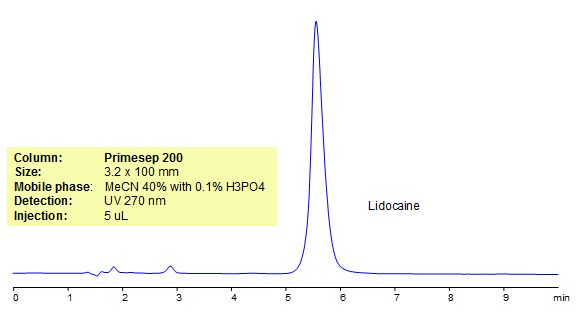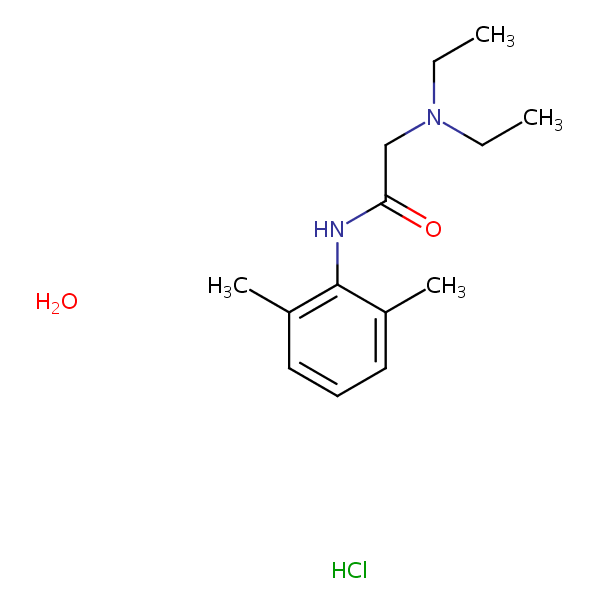| CAS Number | 6108-05-0 |
|---|---|
| Molecular Formula | C14H25ClN2O2 |
| Molecular Weight | 288.821 |
| InChI Key | YECIFGHRMFEPJK-UHFFFAOYSA-N |
| LogP | 2.26 |
| Synonyms |
|
Applications:
HPLC Method for Analysis of Lidocaine
May 3, 2016

Lidocaine, also known as xylocaine and lignocaine, is an anesthetic and cardiac depressant used as an antiarrhythmic agent. It numbs tissue in a specific area by blocking nerve signals in the body. The medication is used to reduce pain caused by skin irritations. An overdose of numbing medicine can cause fatal side effects Primesep 200, a reverse phase column, contains embedded acidic ionizable groups and can retain Lidocaine. The method is UV compatible and can be used as a general approach for analyzing similar compounds.
Application Column
Primesep 200
The Primesep family of mixed-mode columns offers a wide variety of stationary phases, boasting unprecedented selectivity in the separation of a broad array of chemical compounds across multiple applications. Corresponding Primesep guard columns, available with all stationary phases, do not require holders. SIELC provides a method development service available to all customers. Inquire about our specially-tailored custom LC-phases for specific separations.
Select optionsLidocaine hydrochloride monohydrate



